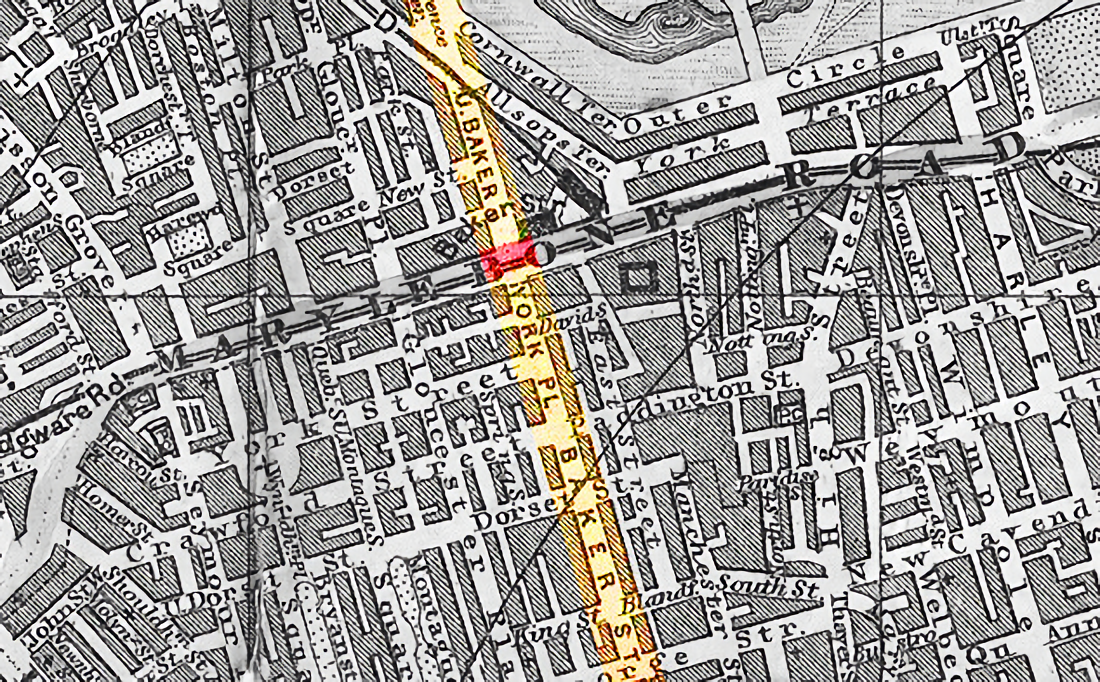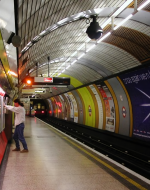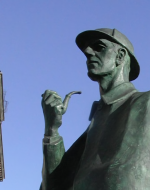Created by Tyler Lyons on Thu, 09/29/2022 - 08:54
Description:
Originally, Baker Street was nothing more than upper-class residential living, but it gradually became a street full of commercial buildings, yet even today, it has still retained its historical high-class attribute ("Guide to Baker Street: History, Architecture, Business and Tourism", 2012). As depicted in the novel The Romance of a Shop, the author details the Lorimer girls' attempt at success on Baker Street. As mentioned in the novel, "there are a great many photographers in Baker Street already" (Levy). At a time when photographers were known to be wealthy, this nod in Levy’s novel goes to highlight the socioeconomic status of the inhabitants of Baker Street. It would have been a cutthroat environment in this field for the young girls, competing with some of the wealthier photographers of the time in London. This was only possible for the Lorimers, coming from a middle-class background – they had money to support this last-ditch effort at success in London.
As described in various places in The Romance of a Shop, the Lorimers lived above a chemist’s shop. This living arrangement is common amongst the businesses that fill Baker Street, and plays into the idea that Baker Street was an upper-class area because most of the business owners simply lived above their shops. When out in the town, the Lorimers frequently use the Baker Street Station. This train station is part of the “tube” system in London. This station dates to 1863, making it one of the oldest stations on the London Underground Network ("Guide to Baker Street: History, Architecture, Business and Tourism", 2012). This is significant because it allowed these upper-class citizens to perhaps easily commute to a job, or like in the case of the Lorimers, travel to the other high-class areas of the town for their photography business.
In 2019, Baker Street was renovated to become a two-lane street. Throughout The Romance of a Shop, street transportation is constantly mentioned on Baker Street. This reconstruction of Baker Street has increased the accessibility to one of London’s most beloved streets ("Baker Street: More Than Just Holmes", 2020). Holmes fans love this street. It is filled with nods to the fictional detective who resided at 221 Baker Street ("Baker Street", 2022). The staging of Sherlock Holmes in this area ties in heavily with the notion of the street being upper-class. While no millionaire, it is known that Holmes was no poor man, choosing to complete jobs simply because he wanted to – caring little about the financial gain. It is also important to note that other important wealthy figures that have inhabited Baker Street include William Pitt the Younger, and Dusty Springfield among other prevalent names ("Baker Street", 2022). Over the past century, Baker Street, spanning a mile and a half, has started to provide housing for families that are not as affluent as previous tenants. With an upsurge in middle-class families moving in, the dynamic of the street has changed to accommodate modern society.
CItations:
Bacon, George Washington. “Baker Street circa 1890.” Smithsonian Magazine, July 2012, http://blogs.smithsonianmag.com/design/files/2012/07/baker-street-1890.jpg.
Perry, Sg. “Baker Street: More than Just Holmes.” London for Free, 16 Apr. 2020, https://www.londonforfree.net/baker-street-more-than-just-holmes/.
Sefton, Jurga. “Guide to Baker Street: History, Architecture, Business and Tourism.” London Office Space Blog, 22 Oct. 2012, https://www.londonofficespace.com/buzz/baker-street-guide/.
“Baker Street - What to Know before You Go.” Viator, 2022, https://www.viator.com/London-attractions/Baker-Street/overview/d737-a24493.




